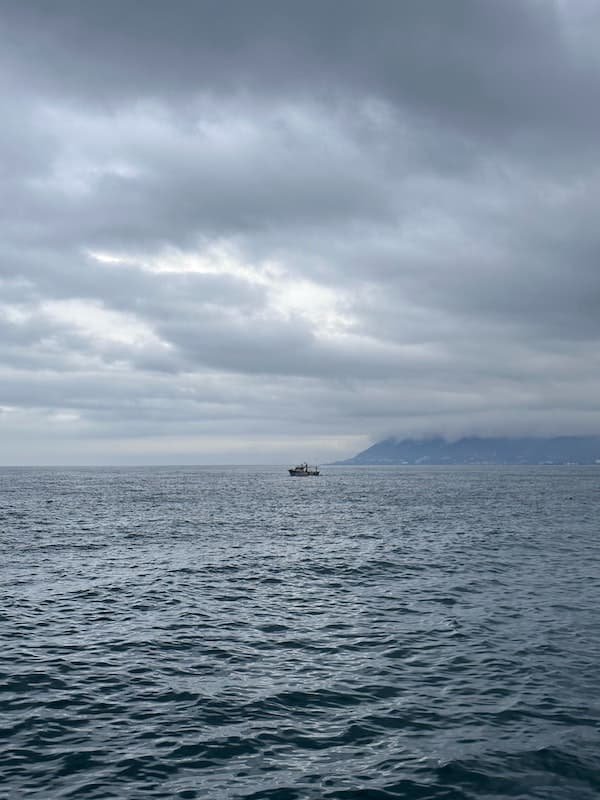
 Roni Essex
Freediver, Spearo, Creator
Roni Essex
Freediver, Spearo, Creator

 Roni Essex
Freediver, Spearo, Creator
Roni Essex
Freediver, Spearo, Creator
Thunderstorms possess immense power, capable of wreaking havoc and posing grave risks to human life. When individuals find themselves at sea during a thunderstorm, they confront a unique and potentially fatal danger: lightning strikes. This article looks into the catastrophic consequences of lightning strikes for those caught in open waters during a storm. By comprehending the risks involved, we can raise awareness, promote safety measures, and protect lives from the deadly force of nature.
Lightning stands as an awe-inspiring and formidable natural phenomenon. It occurs when electrical imbalances between the earth and the surrounding atmosphere discharge in the form of a bolt of lightning. Thunderstorms provide the ideal conditions for the formation of lightning, as they are characterized by intense convective activity, unstable air masses, and the presence of moisture. The energy and temperature associated with lightning bolts are both extraordinary and potentially fatal.

Individuals at sea during thunderstorms face an increased vulnerability to lightning strikes due to their exposure in an open and conductive environment. Water acts as an effective conductor, enhancing the risk of electrical shock. Moreover, the absence of tall structures that could attract lightning increases the likelihood of strikes directly onto vessels or individuals in the water. Sailors, fishermen, and water sports enthusiasts are particularly susceptible to this peril.

A direct lightning strike can cause devastating consequences for individuals at sea. The immense electrical current passing through the body can lead to severe injuries, including burns, internal organ damage, and cardiac arrest. The body's electrical system may be disrupted, resulting in irregular heart rhythms, muscle spasms, and neurological impairment. In the worst cases, direct lightning strikes can be fatal, instantly taking lives or leaving victims with irreversible injuries.

Lightning strikes can wreak havoc on vessels, posing additional risks to individuals at sea. The electrical current can surge through the boat's structure, damaging or disabling vital systems such as navigation, communication, and propulsion. It can ignite fires, rupture fuel tanks, or cause explosions, endangering the lives of those on board. Furthermore, a disabled vessel in stormy seas becomes more vulnerable to other hazards, such as capsizing or being carried off course by strong currents.
It is crucial to develop comprehensive lightning safety plans to mitigate the risks associated with lightning strikes at sea. Monitoring weather forecasts and heeding storm warnings are essential for avoiding potentially hazardous situations. It is advisable to stay informed about the storm's movement, intensity, and duration to make informed decisions regarding navigation or seeking shelter in a timely manner. Establishing clear communication protocols and emergency procedures can aid in swift responses to changing weather conditions.

When a thunderstorm approaches while at sea, seeking safe shelter becomes a matter of utmost importance. Ideally, individuals should head to a sturdy, enclosed structure below deck or a designated lightning-safe compartment. The shelter should be grounded and equipped with lightning protection systems. Avoid open spaces, high ground, or metallic objects that can attract lightning. When no shelter is available, adopting a crouched position in the center of the vessel, away from any metal structures, may offer some minimal protection.
Lightning strikes are responsible for a significant number of fatalities worldwide each year. According to the World Health Organization (WHO), it is estimated that lightning strikes claim the lives of approximately 24,000 people annually. Moreover, the Global Burden of Disease study conducted by the Institute for Health Metrics and Evaluation (IHME) revealed that lightning-related deaths accounted for approximately 0.3% of all global injury-related mortality. These statistics highlight the widespread impact of lightning strikes, underscoring the importance of understanding the risks associated with thunderstorms, particularly for individuals at sea.

Lightning strikes at sea during thunderstorms carry dire consequences for individuals venturing into open waters. The immense power and destructive force of lightning pose a significant risk to human life, potentially causing fatal injuries and devastating vessels. By recognizing the dangers and implementing preventive measures, such as developing robust lightning safety plans and seeking safe shelter, individuals at sea can minimize the risks associated with lightning strikes. Protecting lives and promoting awareness of the dangers of lightning strikes at sea is crucial to ensuring the safety of all who venture into nature's unpredictable domain.